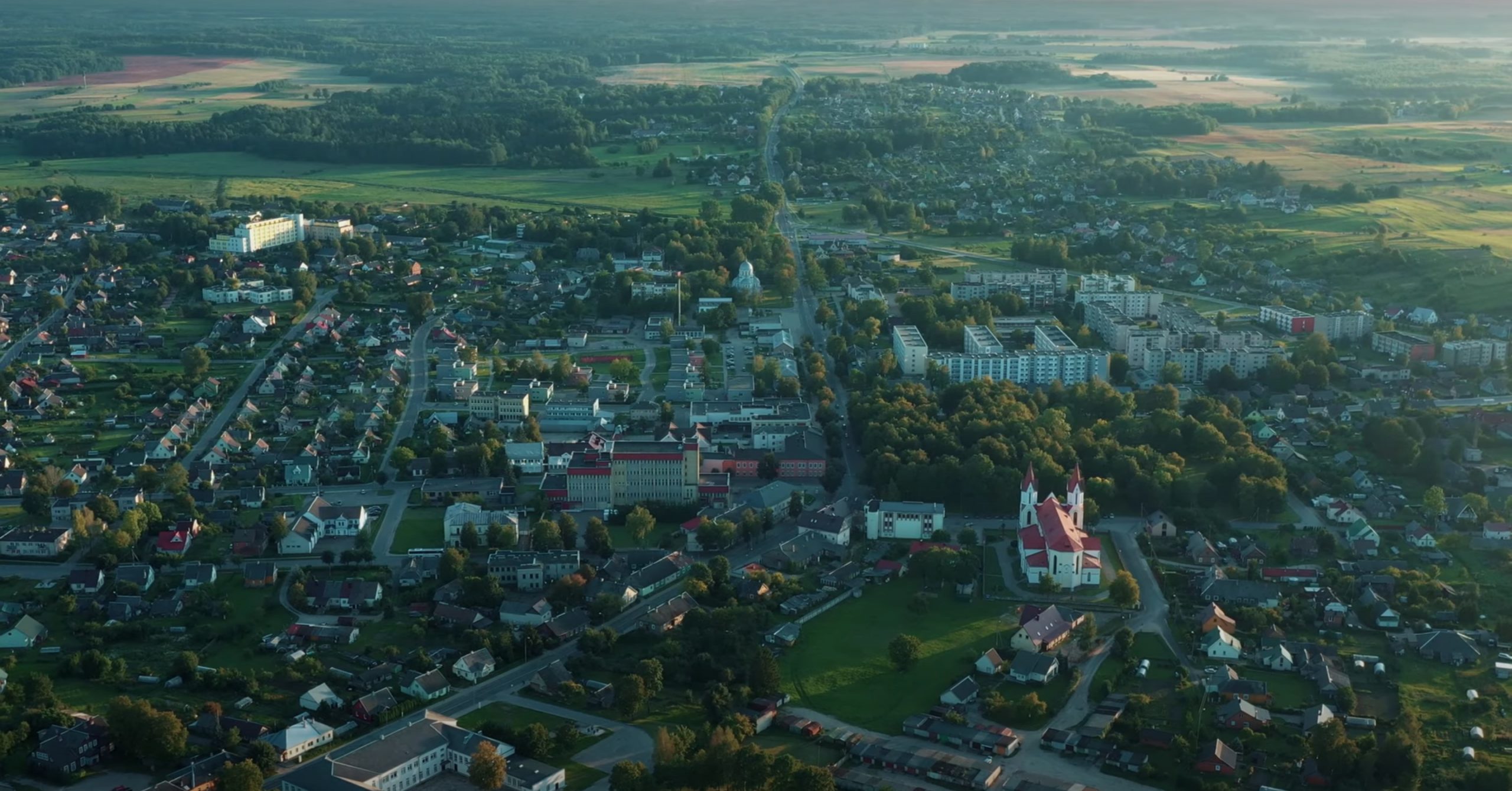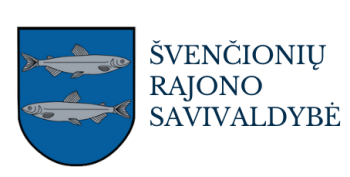
Nature and Tourism
Švenčionys area is famous not for its developed industry, but for its unique and beautiful nature: blue-eyed lakes, lush green forests, the sky blue Žeimena River and old mounds including burial mounds. This is the land of ancient green forests, and blue-eyed lakes nestled between rolling hills and it seems that the sky touches the earth here.
The region’s landscape and climate have priceless healing properties, and these, coupled with the region’s rich cultural heritage, lend themselves to the development of tourism in this region.
If you want to have an enjoyable time and relax with your family or friends, come to Švenčionys region where you will have a perfect rest near pure crystal lakes of Švenčionys region. Three percent of the region’s territory is covered by water. There are over 300 lakes in the district: starting from one of the biggest of them Kretuonas (800 hectares)to the “small lake eyes” of the Labanoras forest. There are 6 islands in Kretuonas Lake. The largest island (19 hectares) is populated by several rare species of birds. Therefore Kretuonas Lake has been declared as an ornithological reserve. The settlements at Kretuonas Lake are renowned for their unique Neolithic archaeological monuments that attract archaeologists to this area. Along the region’s southern border, Neris River flows, and from the north to the south its tributary Žeimena, into which flow waters from the smaller streams such as Lakaja, Pershokshna and Mera. Both the rivers of the river Žeimena basin and the lakes are known for their clear and pure water. This is why Žeimena and its tributaries are a favorite spawning places for salmon, trout and other fish.
The hills of Švenčionys (the highest peak in the area is Girdžiuliškė – 250 m) divide two large river basins: Nemunas and Dauguva. Rivers in the region’s territory originate from these basins; and due to their high position above sea level (160-170 m), the currents here flow rapidly. Tourists traveling by water through Lithuania can easily reach the Baltic Sea from the very eastern point in Lithuania; not only along the Žeimena – Neris – Nemunas, but along the rivers of the Dauguva basin as well. The forests, covering 53% of the area, are the great treasure of the region. With their natural riches (mushrooms, berries, fauna) they are not bland in comparison to some of the other Lithuanian forests; in fact they exceed in variety and beauty. The forests are abundant in many animal species: hares, foxes, wolves, elk, roe deer, moose etc.
Hunting is a popular hobby in the region. There are 2543 hectares allocated for commercial hunting in Adutiškis area. Most of the forests here are deciduous and untouched by civilization and attract hunters from all over the world. Labanoras, Pabradė, Baranavas and Antanai forests are well known in Lithuania.
Big part of Labanoras, the largest forest in Lithuania, covers Švenčionys region. Writers such as: G. Isokas, L.Grundzinskas, Professor Č. Kudaba, and naturalist K. Balevičius have written many literary works about Labanoras. There are over 80 lakes and streams winding through the pine-covered hills in Labanoras forest. One can find many rare botanical species here and the lakes, rivers and streams are the spawning grounds of rare species of fish. In order to ensure the preservation of these valuable species, nature reserves have been established. One of the largest, Kanys Marsh, has been declared as a botanical and a zoological reserve.
The forest is also famous for the Labonoras dūda (bagpipe) which was popular in the 17th and 18th centuries, but no longer exists. The bagpipe was made from a bull skin bag, a wooden blow piece and two wooden pipes. To this day, people living in forest villages in the Labonoras area have preserved ancient songs, fairy-tales and serenity. There are many beautiful places in eastern Aukštaitija. In order to preserve and promote these areas, the state has established Aukštaitijos National Park and Labanoras, Sirveta and Asveja Regional Parks, which cover most of the region’s territory. One can conveniently travel through these parks by bike, on foot or by water. If you travel along these well developed tourist routes, you will see many wonderful landscapes, and you will be able to imptove your orientation skills.
Nature has generously given beauty to the Švenčionys district. In the green forests, and in the multicolored patterns of blooming meadows near the lakes, one can see many unique natural monuments that have been carefully preserved for generations. On a hot and sunny summer‘s day spring “Lino verdene” will refresh and invigorate you. The water here is said to be as clear as tears and people say that this water contains miraculous healing properties.
At the Šventa arbour a traveller can find shelter from the hot sun under a canopy of 26 lime trees. The queen Pine tree raises its ring of branches towards the blue skies here,too.
In the Kaltanėnai area, the Obelu Ragas village is famous for an ancient 13-stemmed juniper.
It is difficult to mention all of the monuments in Švenčionys region, as each one of them is unique, surrounded by legends and stories. In the summer time, the architectural monuments drown in sunrays amidst the green trees.
It is highly recommened to visit Cirkliškis estate that stands in the middle of a park, where the buildings are reminiscent of the 18th century. The estate building, ice cream parlor and the blacksmith’s workshop have survived until this day. These architectural monuments of Republican significance are located about 2 km from Švenčionys. Currently the former estate building houses classrooms of the vocational school. At the beginning of the19th century, the area of Cirkliškis estate was constructed in its entirety. The owner of the estate, Domicėlė Sekežinskaite – Mostovskienė was among the designers. Historian Joachimas Levelis, painter Jonas Rustemas and other famous people in the cultural area were frequent guests at the estate. The Mostovskiai supported and financed the 1863 Uprising and therefore were exiled to the Tobolsko region. At the end of the 19th century, Chaleckiai purchased the estate and in 1913 the owner was Vanda Chaleckiene. Later the estate was used as a Soviet farm and after that an agricultural-technical school was established in the manor house. Next to the estate there is a park which covers an area of 35 hectares. There are many old spruce, oak and maple trees in the park. There is also a small lake and Perkūnkalnio Mound in the area.
Švenčionys area is famous for the Labonoras church and bellfry, which are well known monuments of Republican significance. People of Labonoras say, that in the early 19th century, people found that the logs which had been intended for the construction of a church, had been moved to a high hill by means of some miraculous force, and Virgin Mary’s picture had been hung upon a pole. In this holy place a church was built. Since those times, people have been celebrating Virgin Mary’s birthday (Labanorine) on the 8th of September. This folk architecture building contains art and monuments that existed in the church and bellfry. The old residents still remember the Petrauskai family: a family of musicians. In the late 19thcentury, Jonas Petrauskas was the organist in the Labanoras church and later was replaced by his son-composer Mikas Petrauskas.
Another church worthy of mention is Strūnaitis church. This church stands high upon a hill, proudly looking down at the village farmhouses and protecting the peace of the deceased across the road. Holy Virgin Mary, St. Peter and St. Paul churchis a building of late classicism with elements of romanticism. It is located on the highest point in the village with its west wall facing the street. The church and its bellfry were built between 1944-1948 based on the design of the architect Karolis Gregotovičius, and were financed by Konstantinas Moslovskis.
A lot of water has flowed through the old water mills of Švenčionys district. These eternal waters are welcomed and seen off by these water mills: Bruknynė, Strūnaitis and Pakretuonė.
There are many architectural monuments in the Švenčionys area. Legends have surrounded the Perkūno Kalnas mound since pagan times. Legends tell that pagan priests lived here, a sacred fire burned, and ceremonies were performed. Strūnaitis people tell legends about Akvieriškės mound, which looks impressive and picturesque. One can reach it by Toleikos village road, down the hill behind Varniškis village, where you have to cross the Strūnos stream. A legend tells that this is a religious mound which Napoleon’s soldiers created by soil that was poured from their caps. There are many mounds and ancient cemeteries in this area, which is an evidence that this area was a favorite with ancient settlers.
Cultural and historical relics of the Švenčionys area are housed and displayed in the „Nalšia“ and Reškutėnai school museums. In 1945, the Country Life museum was opened. In 1992, it was renamed „Nalšia museum“. This name reflects the heritage of old spiritual and cultural values. The ethnic culture of this area is very specific and authentic. The museum collects exhibits of archaeology, crafts, and household tools; organizes expeditions (country study, archaeological) for collecting the exhibits, and studies the ethnological heritage. The Reškutėnai school public museum was opened in 1997 upon the initiative of Izadorius Kazakevichius. There are many exhibits testifying to the cultural, everyday life and wisdom of the district’s ancestors. The museum has the following exhibitions: music, work tools, postage stamps, archaeological findings, weaving, church relics, partisan movements, flax and cannabis, village history. In addition, there are pre-war newspaper and magazine exhibits on display. Every year, numerous guests from neighbouring regions and foreign countries visit the museum. This is merely a brief introduction to the Švenčionys district.
Dear Visitors, come and visit our wonderful land and you will find yourselves in the midst of unspoiled nature, get to enjoy great virgin forests, listen to the mysterious murmur of rivers and streams, dive into crystal clear waters of the lakes. You will get to know the wonderful local people as well as their customs, find out about the regions’s history, hear many fascinating stories and legends and listen to the beautiful traditional songs of the region.
We will welcome you with hospitality and will do our best to make sure you will want to visit our district over and over again!
From the green peaks in the west to the wide horizons of Adutiškis, and from the bends of the Neris River to the ridges of the North Nalšia highlands, the Švenčionys district located in the east of Lithuania is characterized by a variety of landscapes. Monuments distributed throughout the district remind people where they live, and what the values of this Lithuanian land is…
A film presenting Švenčionys region:
Vilniaus str. 19, LT-18116 Švenčionys
Phone +370 387 66372
Fax +370 387 66365
E-mail savivaldybe@svencionys.lt
Municipality budget office code 188766722
Data is collected and stored
in the Register of Leagal Entities
